Activities & Attractions in Faroe Islands
Though the Faroe Islands are small they are not short on interesting activities and attractions from natural wonders to exciting hikes and boat tours.
Nicole Franken – Visit Faroe Islands
Art & Culture
A journey through the Faroe Islands can take you from the capital of Torshavn to quaint villages and historic sites.
Torshavn, the Capital
Small cities and towns tend to have concentrated amounts of art, culture and history and that can certainly be said of Torshavn, one of the smallest capital cities in the world. Walking through the National Museum will give visitors insight into the cultural heritage, nature, and history of the Faroe Islands. Exploring the old town section of the city is a great way to become acquainted with the people and culture of the city.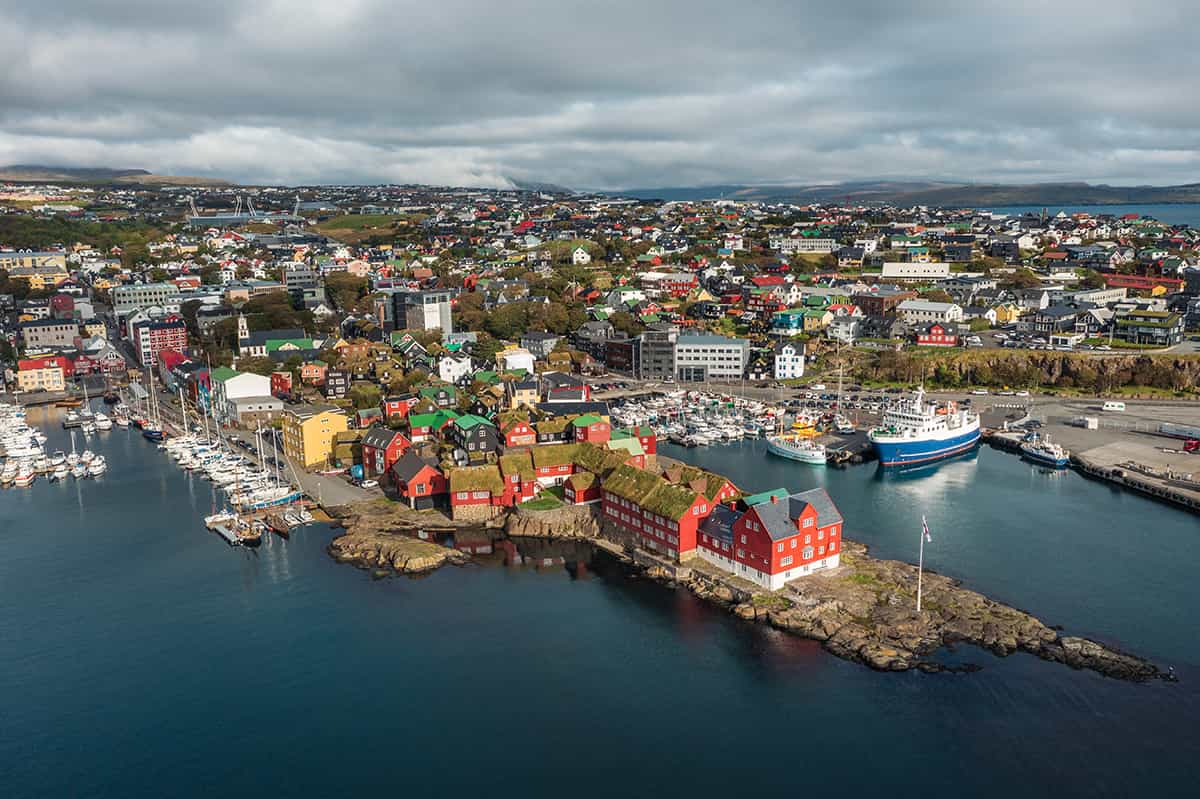

@mitch_wies, Visit Faroe Islands
Hvalvik Church
In Hvalvik, one can visit the oldest traditional black wooden church on the islands. This church, built in typical Faroese architectural style without a stone foundation, was constructed using wood from a ship that ran aground in Saksun in 1828. The pulpit dates from 1609 and was originally in the church in Torshavn.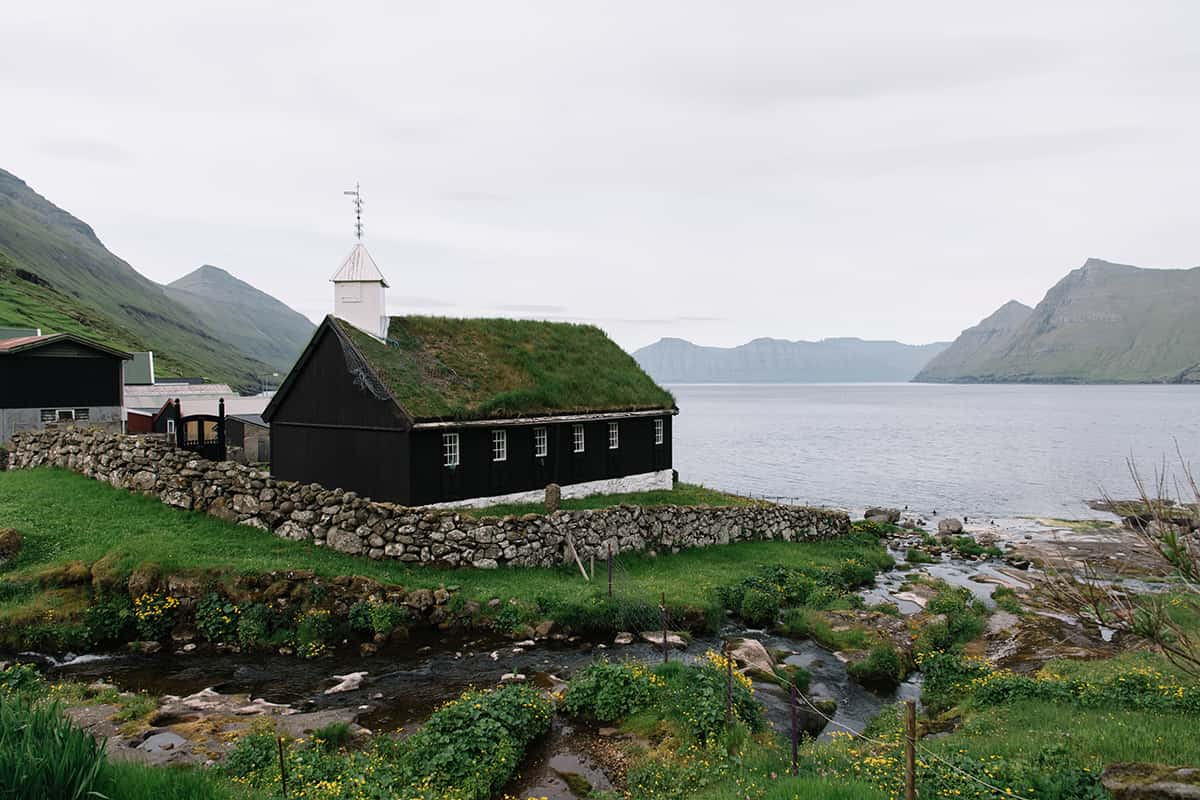

Visit Faroe Islands, Klara Johannsen
Kirkjubour
Kirkjubour is the southernmost village on the island of Streymoy and it is where visitors will find the country’s most important historical site dating back to the Viking Age, the ruins of St. Magnus Cathedral. There is also St. Olav’s church which dates from the 12 th century and Roykstovan,” a 900-year-old farmhouse with a turf roof. “Roykstovan,” is one of the world’s oldest wooden houses and has been in use as a home to the same family for the last 17 generations.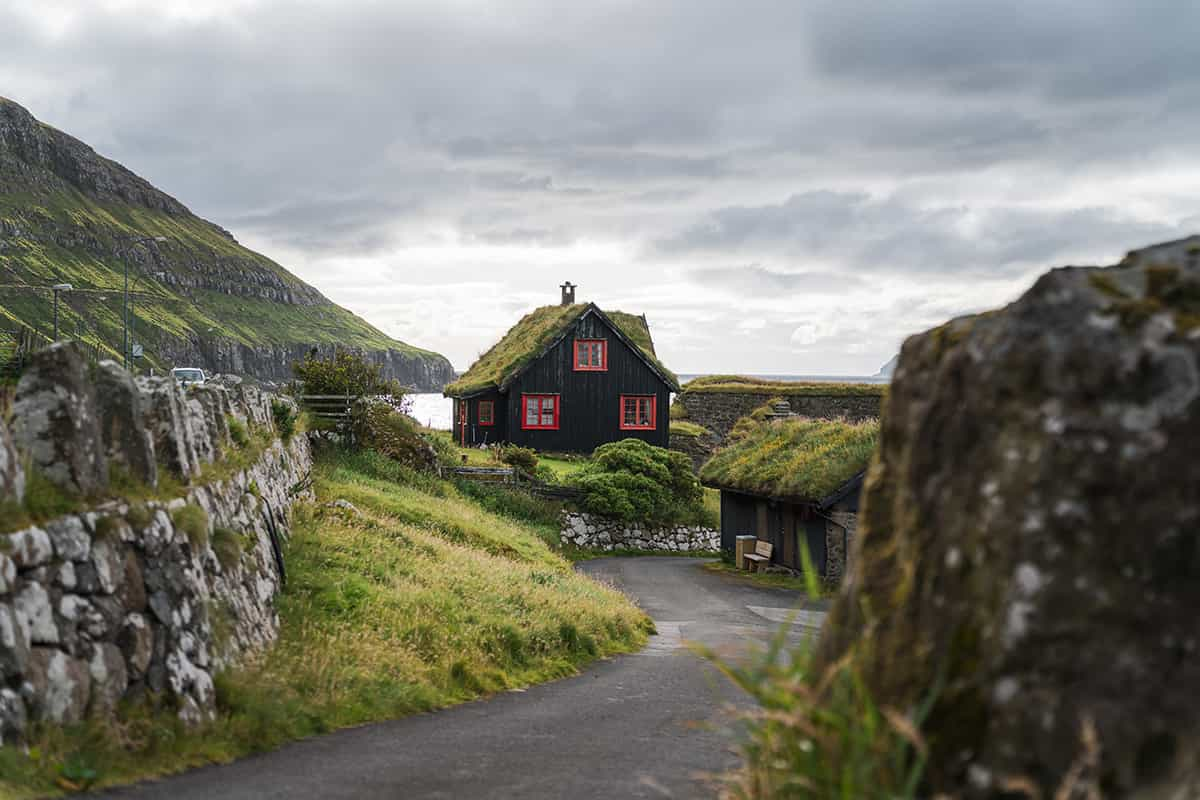

Paul & Sybille Bréchu, Visit Faroe Islands
Klaksvik & Kopakonan
Klaksvik is the second largest town in the Faroe Islands and here visitors will find the Christian Church, which is dedicated to the memory of the Faroese sailors who lost their lives during World War II. An interesting feature of the church is an 8-man rowboat that hangs from the ceiling, which was once used to transport the priest between villages. Only a short ferry ride away is the island of Kalsoy where you can visit the town of Mikladalur, where the statue of the Seal Woman (Kopakonan) can be seen. The tale of the seal woman is one of the best-known folktales in the Faroe Islands. Seals were believed to be former humans who voluntarily sought death in the ocean. Once a year, on the Thirteenth night, they were allowed to come on land, strip off their skins, and amuse themselves as human beings, dancing and enjoying themselves.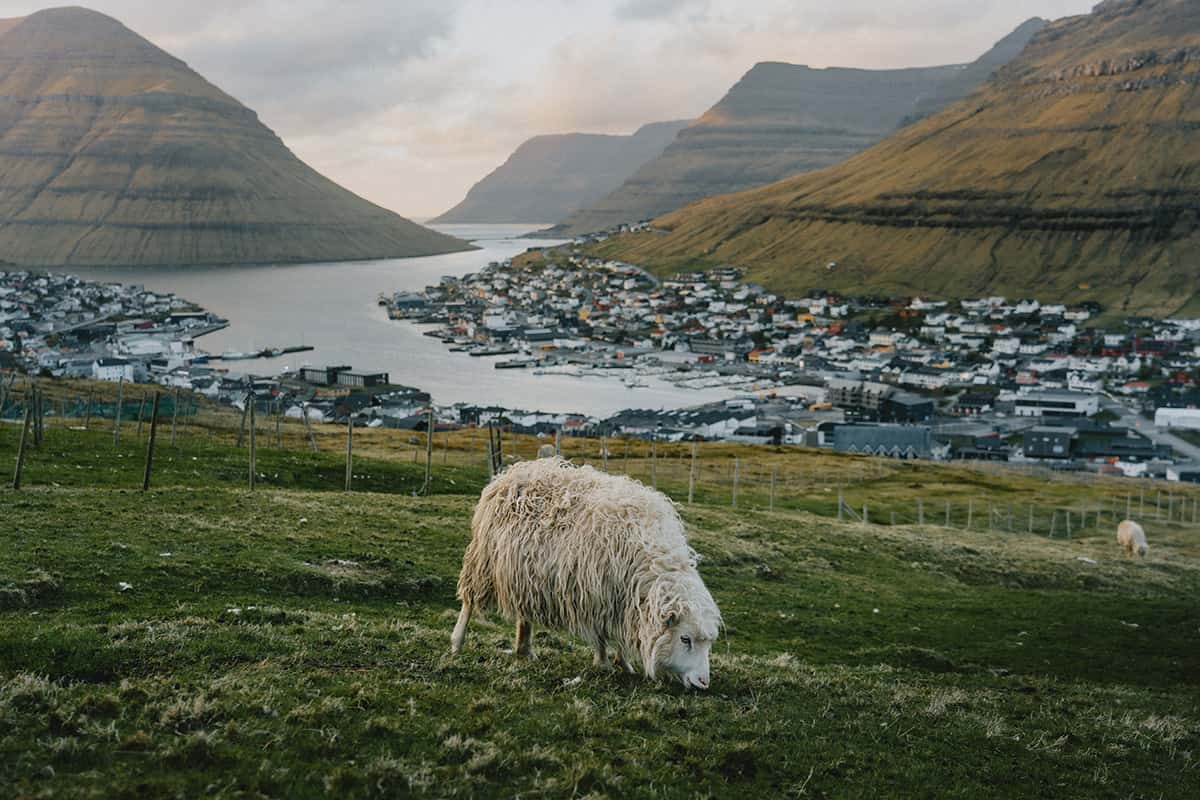

Daniel Casson/@dpc_photography, Visit Faroe Islands
Faroe Islands Food Culture
Okkara Beer Brewery
There is a long tradition of brewing in the Faroe Islands. The first local brewery was opened in 1888, which means the Faroese have been brewing for over 100 years. The locals take great pride in their local brew and are often heard saying that they prefer their drinks fresh, meaning not imported. On a visit to the brewery visitors will hear stories about the brewery and get to taste a few of the products.
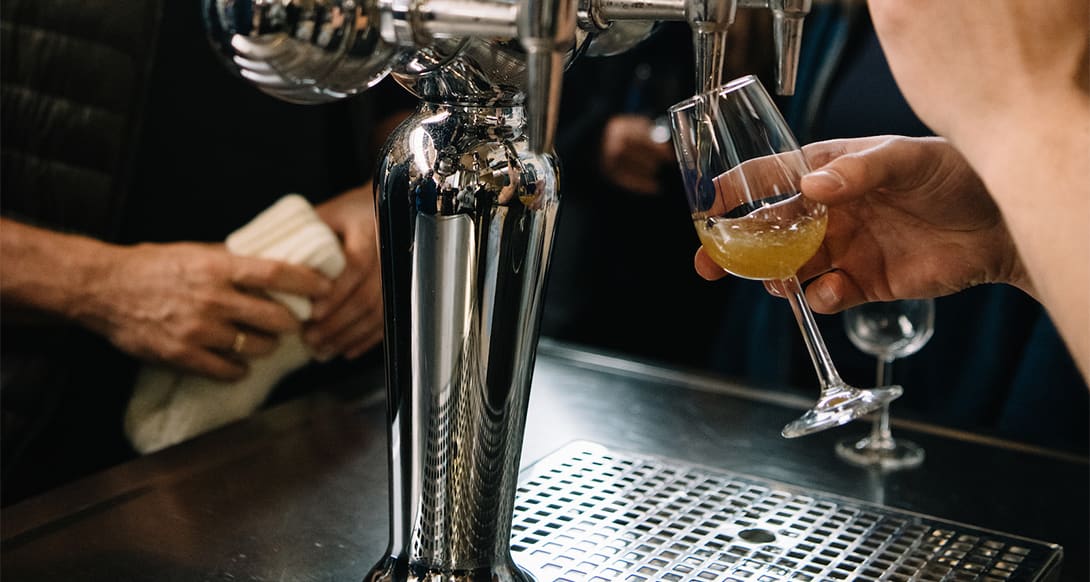

Klara Johannesen /@klarajohannesen, Visit Faroe Islands
Wildlife & Wilderness
The landscape of the Faroe Islands is simply gorgeous. The harsh North Atlantic Ocean, winds and glaciers have created rock formations and mountains that capture the imagination and waterfalls that appear out of myth and legend.
Risin and Kelling
Just off the northern coast of the Eysturoy near the town of Eidi are the sea stacks Risin and Kelling. Risin og Kellingin means The Giant and the Witch (or Hag) in Faroese in reference to an old legend about the stacks’ origins.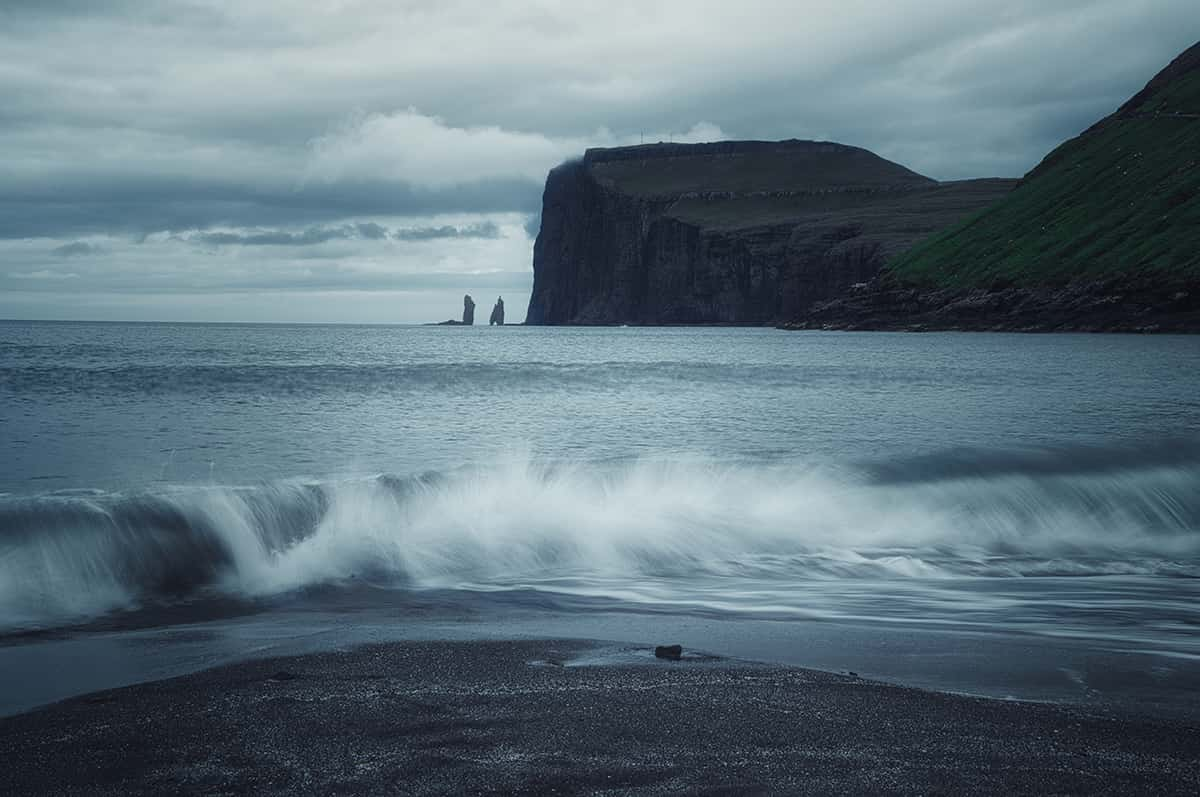

@jonasrudolph, Visit Faroe Islands
Slaettaratindur
Slættaratindur, literally translated means “flat summit,” and is the highest mountain in the Faroe Islands, reaching 880 meters (2887 ft.) high.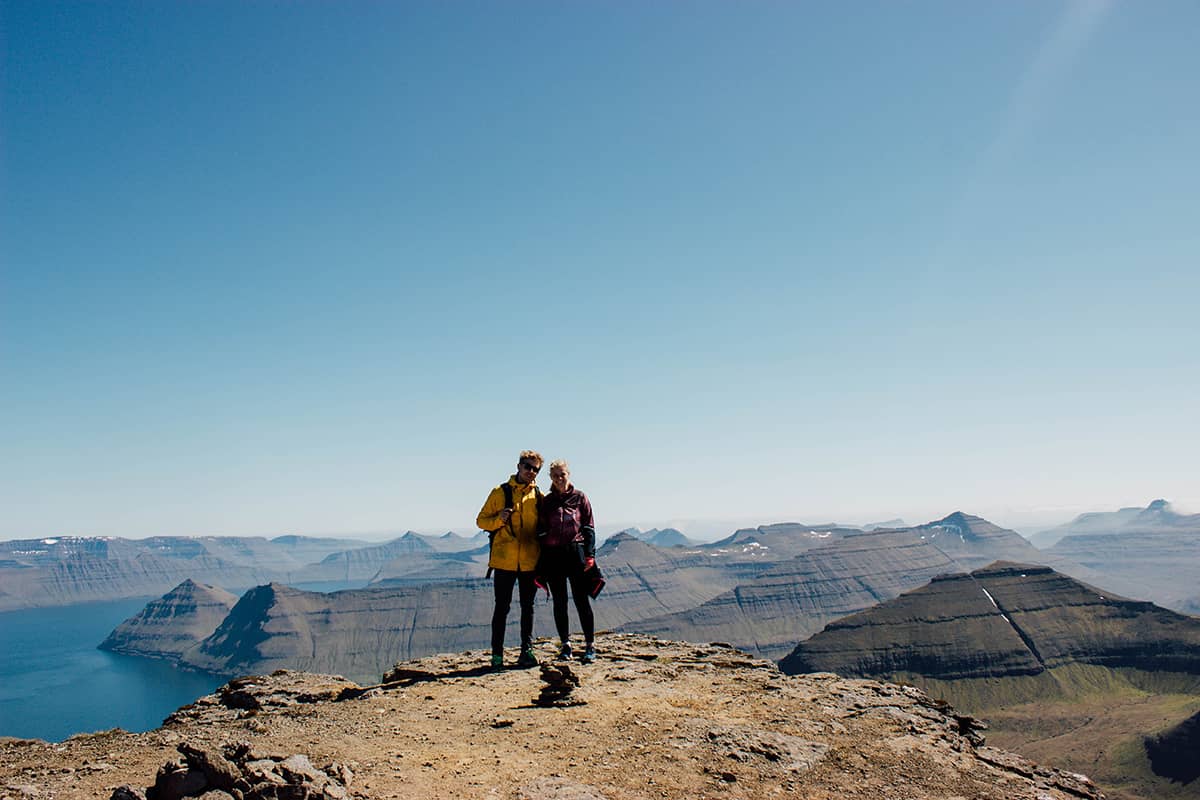

Depart Deux, Visit Faroe Islands
Sornfelli Mountain
From Sornfelli Mountain one can get a fantastic view of the Faroe Islands’ beautiful landscape. The best thing about “the hike” is that the top of the mountain can be reached by car, so it is very relaxing with no more than 30 meters from the parking space to the viewing area.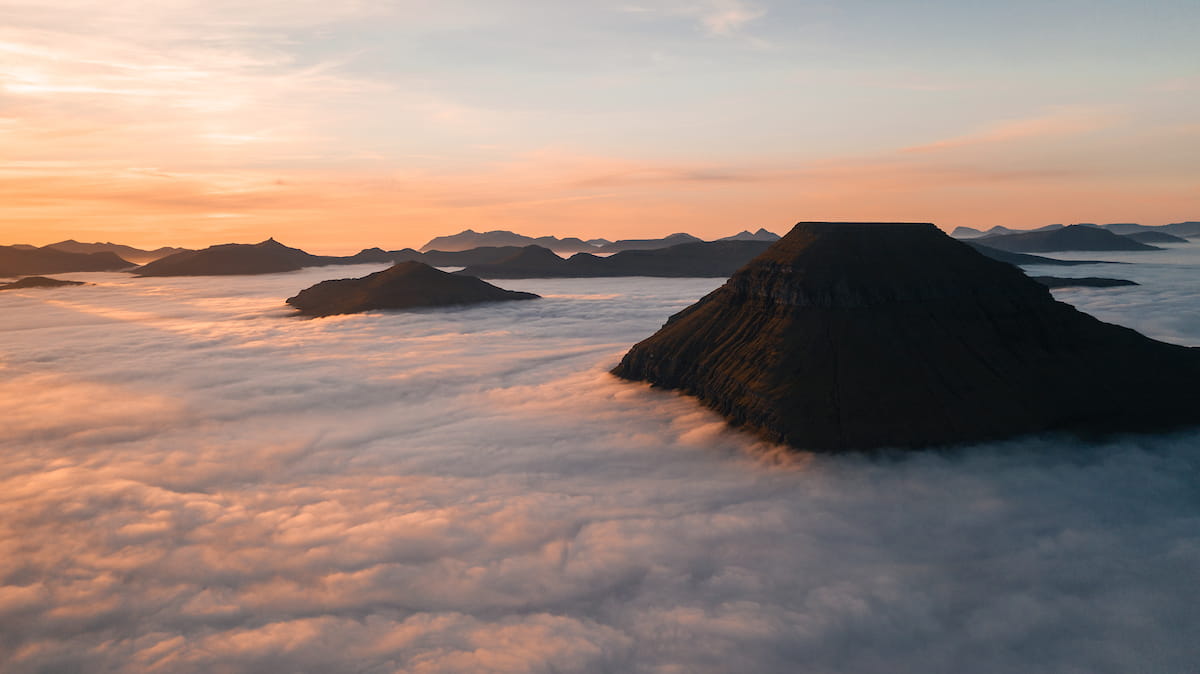

Chris Borg/@iamchrisborg, Visit Faroe Islands
Fossa Waterfall
No trip to the Faroe Islands is complete without visiting the archipelago’s largest waterfall. Falling from about 140 meters it is known for its twin cascades that spill into the sea.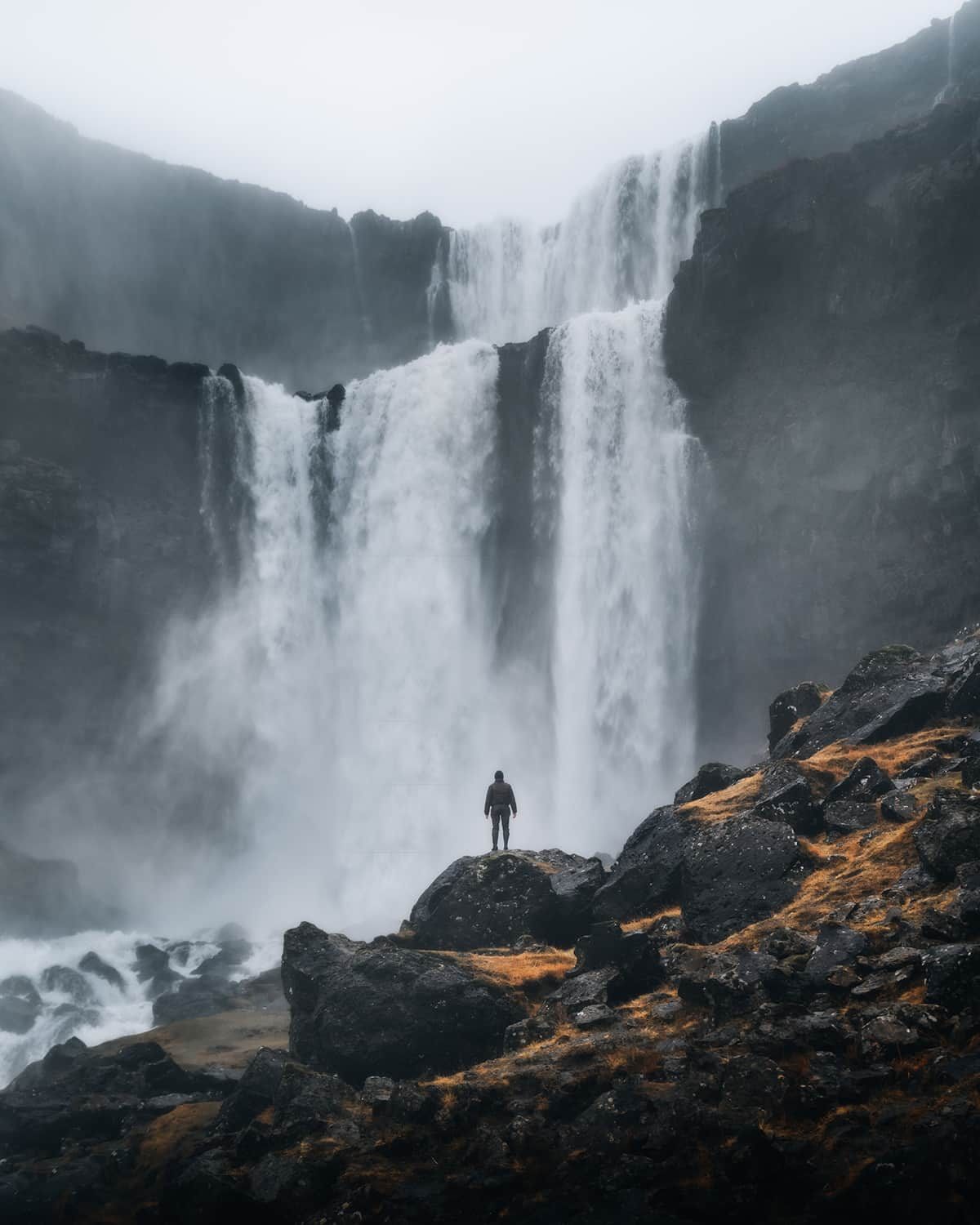

Luke Stackpoole/@withluke, Visit Faroe Islands
Mulafossur Waterfall
One of the most stunning waterfalls in the Faroe Islands is in the quiet village of Gasadalur which is home to only 20 inhabitants. Visitors to the viewing site have only to walk five minutes from the parking lot to see both the village and the waterfall plunging into the sea below.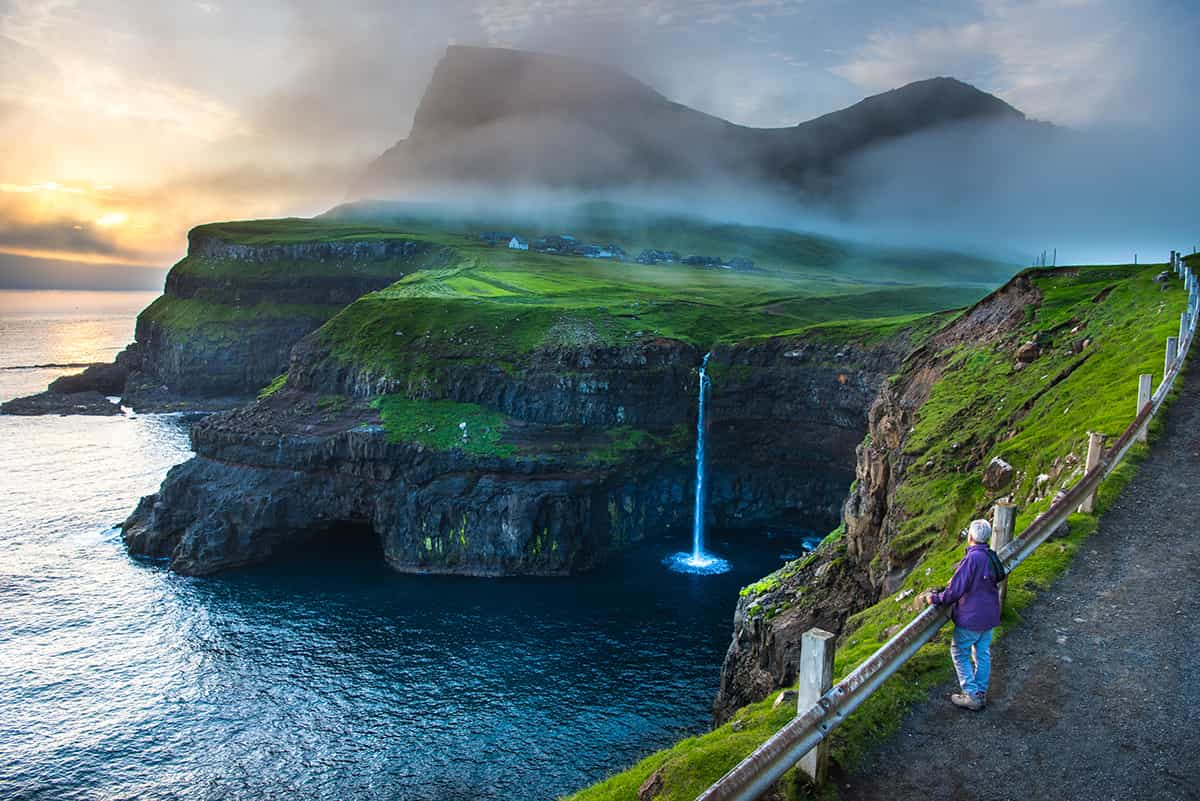

Gerben van der Waals/@gerbenvanderwaals, Visit Faroe Islands
Sandoy
Sandoy, which means “Sand Island”, is the agricultural center of the Faroe Islands and its bird cliffs and steep slopes are a breeding site for many seabirds earning them the designation as an Important Bird Area.

Mitch Wies/@mitch_wies, Visit Faroe Islands
Adventure & Active Travel
Exclusive Experiences
The Faroe Islands aren’t all quaint villages and beautiful landscapes, mountains are made for climbing after all. Travelers can get out on the water on the RIB Boat tour to Hestur, hike to Trælanípan or go sailing out to the Vestmanna sea cliffs.
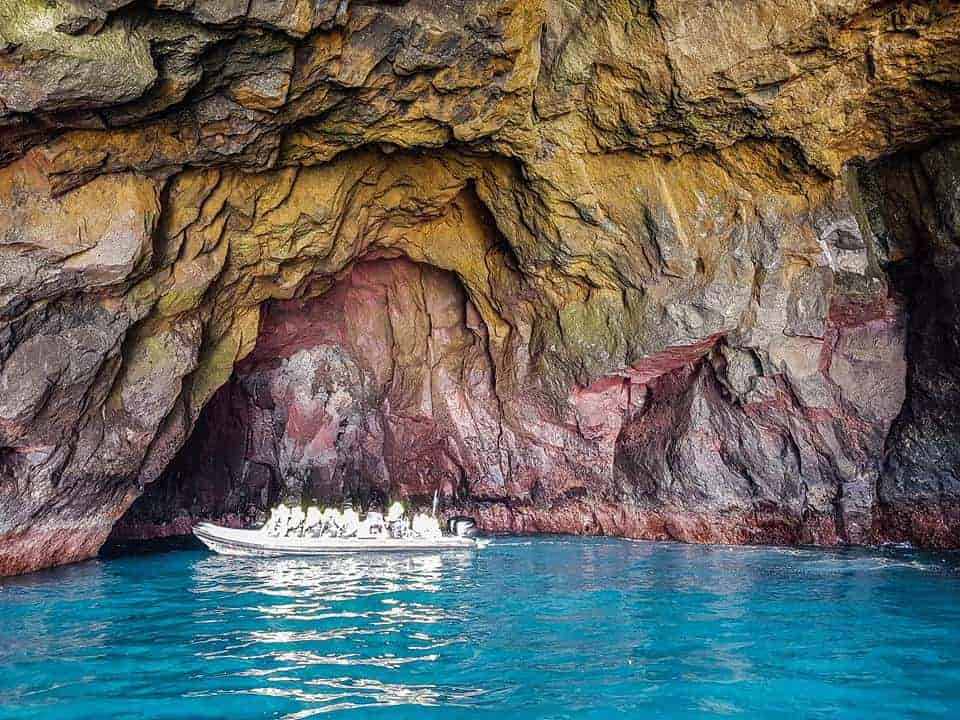

RIB62
RIB Boat Tour to Hestur
At Gamlaraett harbor, climb on board a RIB boat and sail around Hestur island. The greatest attraction here is the impressive sea cave, Klaemintsgjogv. This may be the world’s largest sea cave with preliminary measurements showing that Klaemintsgjogv measures approximately 350,000 m³ . Sailing into this cathedral of natural stone is like entering a completely different world.
Hike to Traelanipan
The hike to Traelanipan is an easy and beautiful walk. The trail was originally the path to the peat field and takes trekkers through the old peat meadows where they can see the many collapsed stone structures that were used to store peat. Traelanipan, “Slave Mountain”, is a perpendicular rock wall that juts 142m upwards out of the sea. It is believed to have gotten its name from the Viking Age when enslaved people were pushed off the mountain.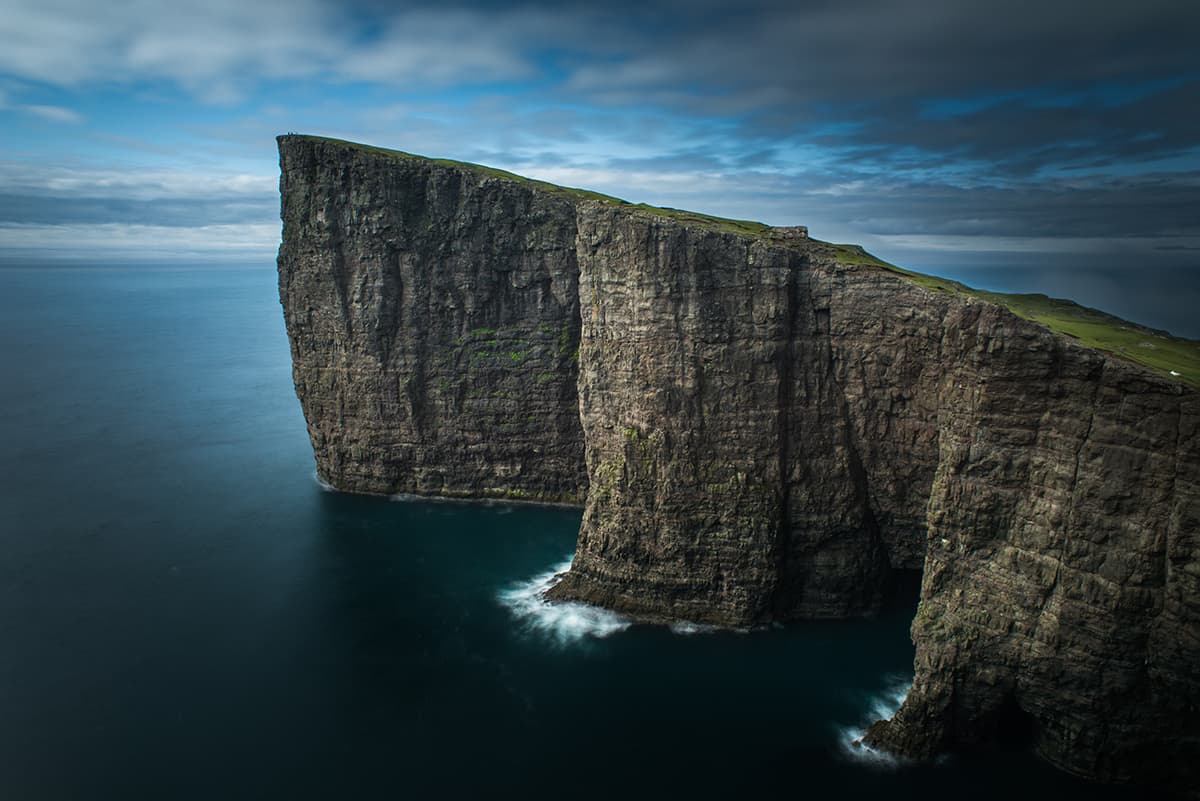

Gerben van der Waals/@gerbenvanderwaals, Visit Faroe Islands
Lake Leitisvatn
Lake Leitisvatn (also known as Sorvagsvatn) is the largest lake in the Faroe Islands. It has also been named “the lake over the ocean” as the view from Traelanipan from a particular angle functions as an optical illusion, appearing to look as though the lake is hovering directly above the ocean.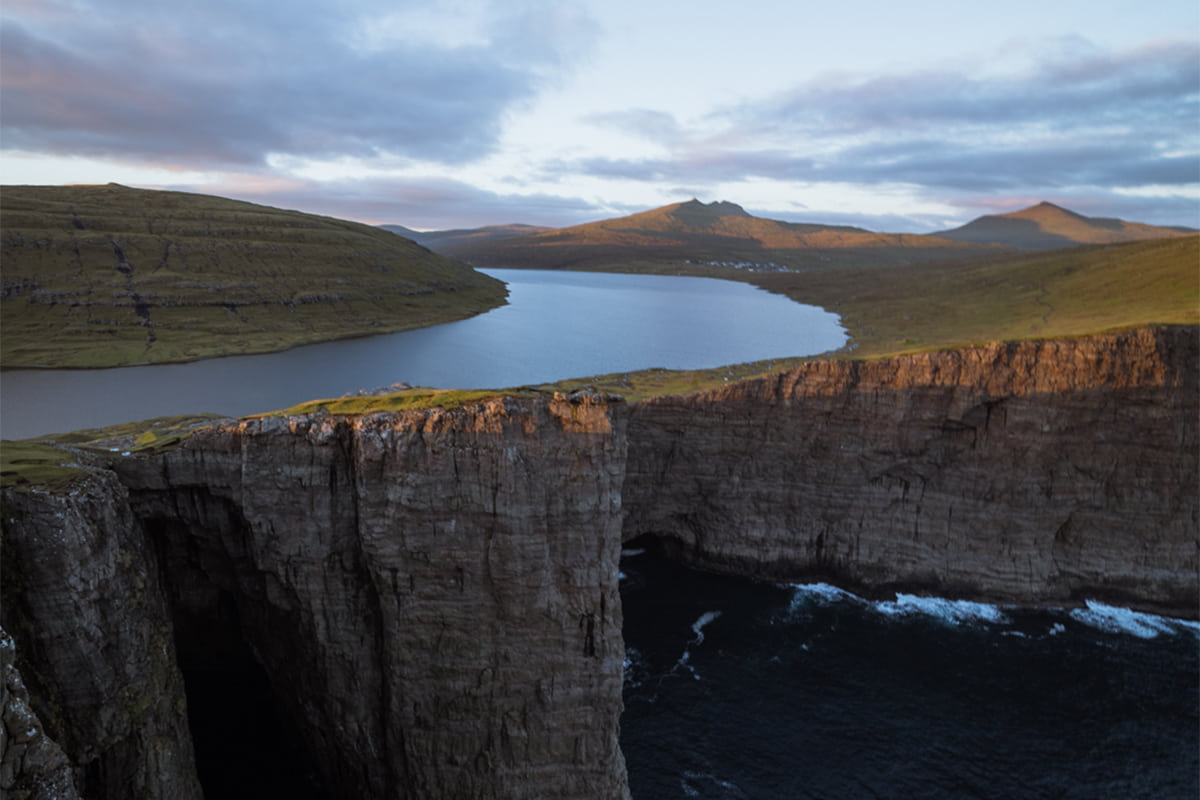

João Falcão / @ joaoffalcao - Visit Faroe Islands
Sailing in Vestmanna
The town of Vestmanna is best known for Vestmannabjorgini, cliffs to the north of town that are home to thousands of seabirds, including puffins, fulmars, and guillemots. Boat tours from Vestmanna sail close to the towering cliffs, where it is possible to view birds nesting in the deep caverns carved by the surf through the ages.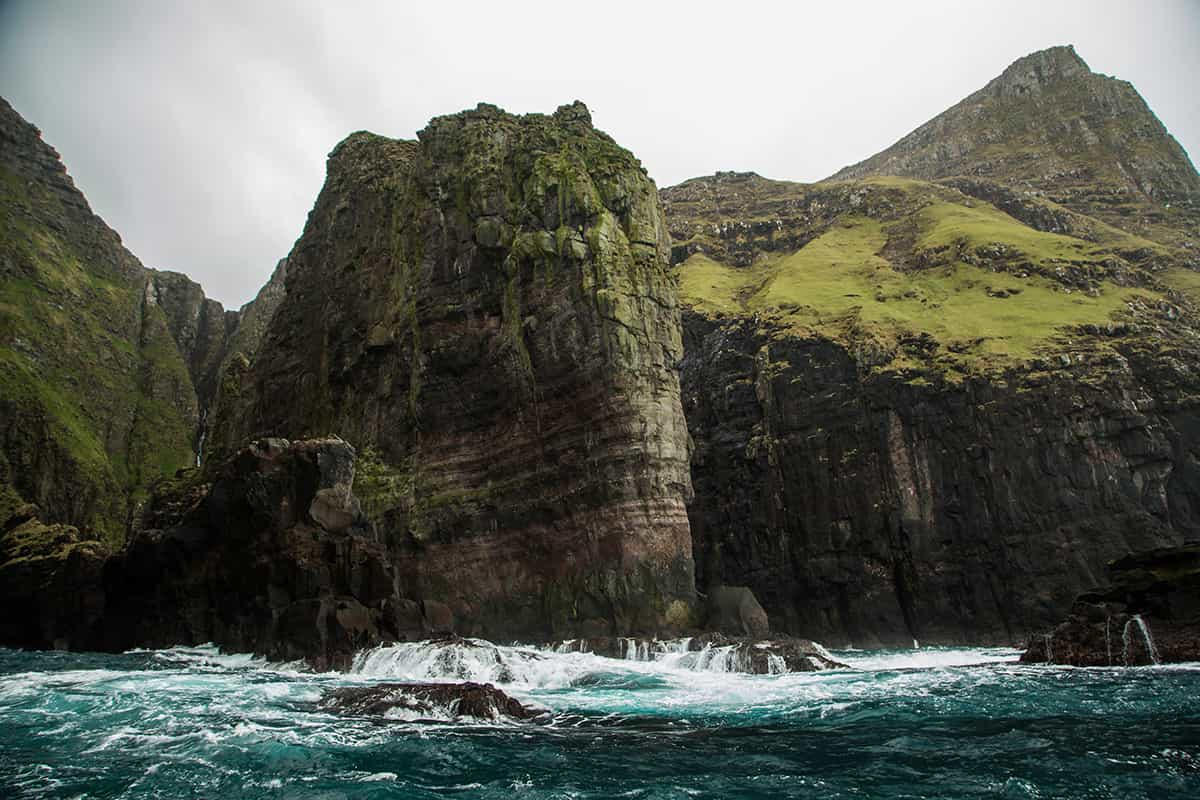

Brian Rene Egebjerg/www.facebook.comfotografegebjerg, Visit Faroe Islands
Lunch at a Local Home
One of the many highlights of a visit to the Faroe Islands is the opportunity to visit with a local family, taste traditional Faroese food and hear stories about life on the islands.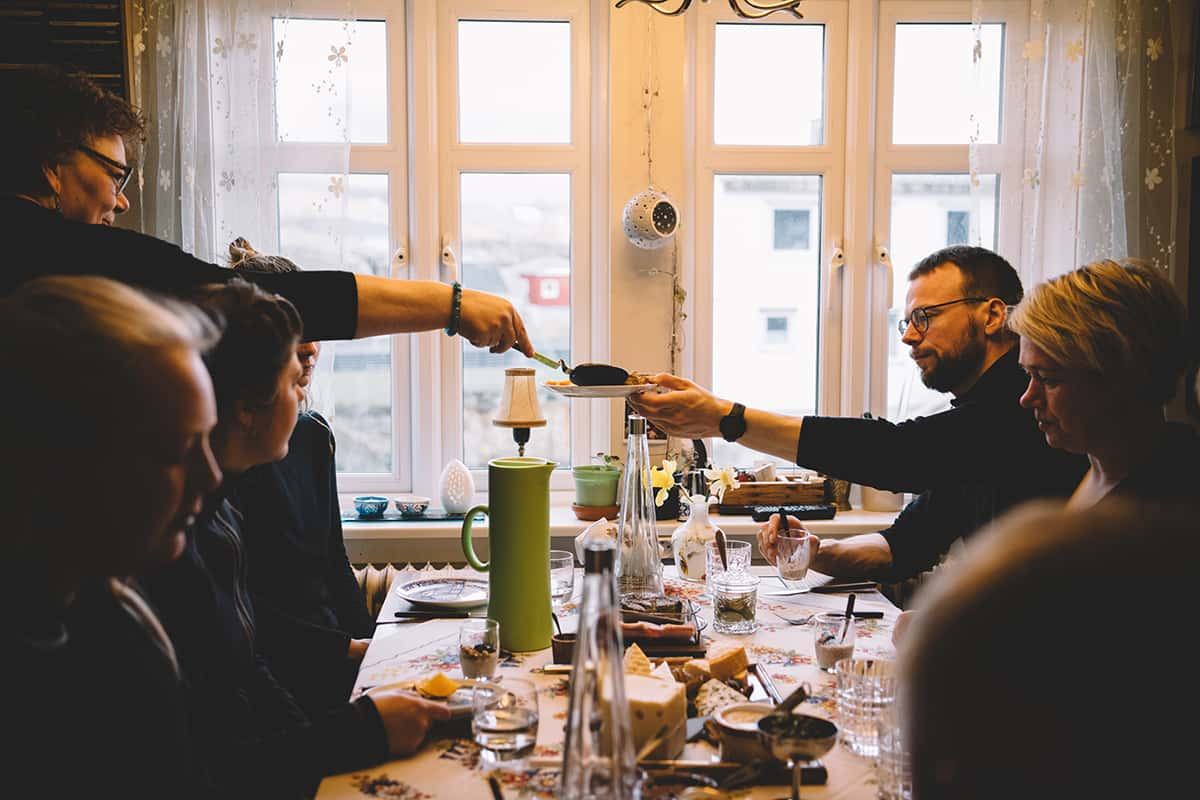

Klara Johannesen/@klarajohannesen, Visit Faroe Islands
Streymoy Island
Streymoy is the largest of the Faroe Islands and also the most populated. You won’t find towns and villages like Saksun, Tjornuvik, Kirkjubour and Vestmanna anywhere else in the world.
Saksun
Saksun is a beautifully remote hillside village beneath a majestic mountain and is one of the most worthwhile destinations in the country. Known for its tranquil atmosphere, the tiny village of 14 inhabitants offers fantastic views of the surrounding mountains.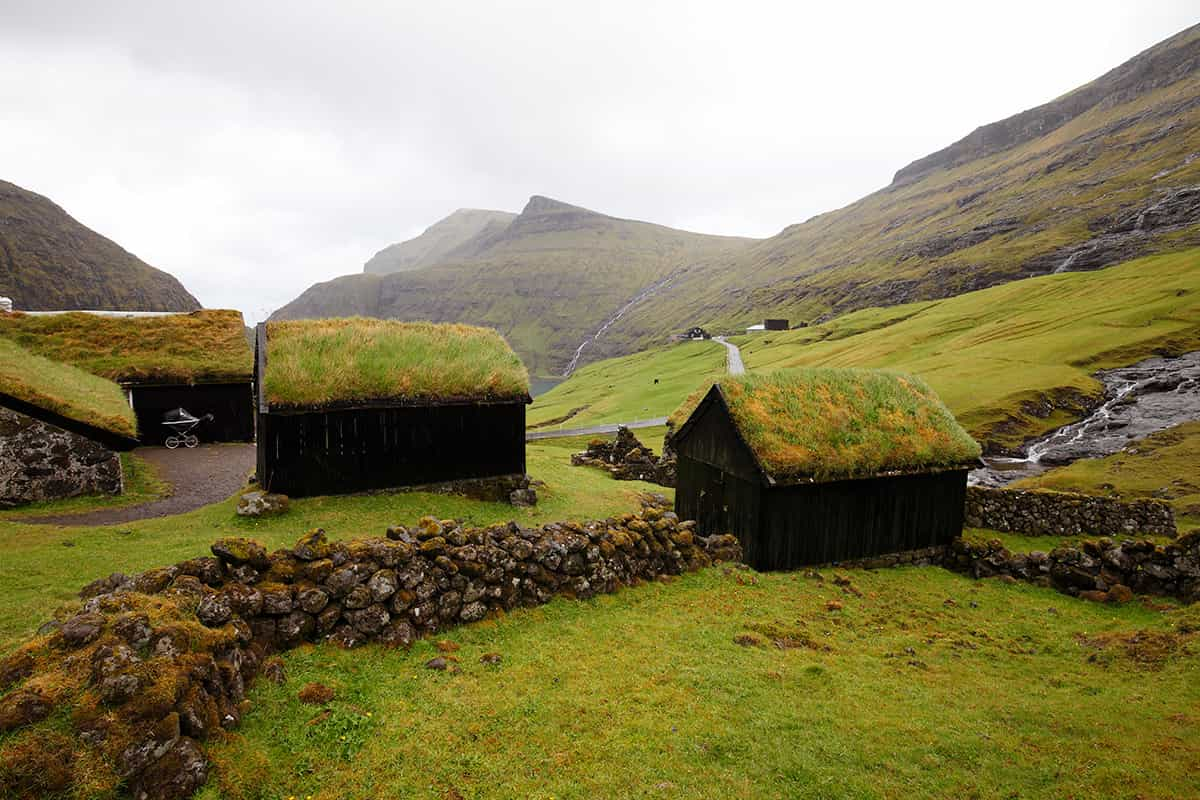

@peterdunphyphotography, Visit Faroe Islands
Tjornuvik
The small village of Tjornuvik is uniquely located on the northern tip of Streymoy in a narrow bay with no other villages in sight. The drive to Tjornuvik is magical and hiking through the unspoiled scenery is highly recommended.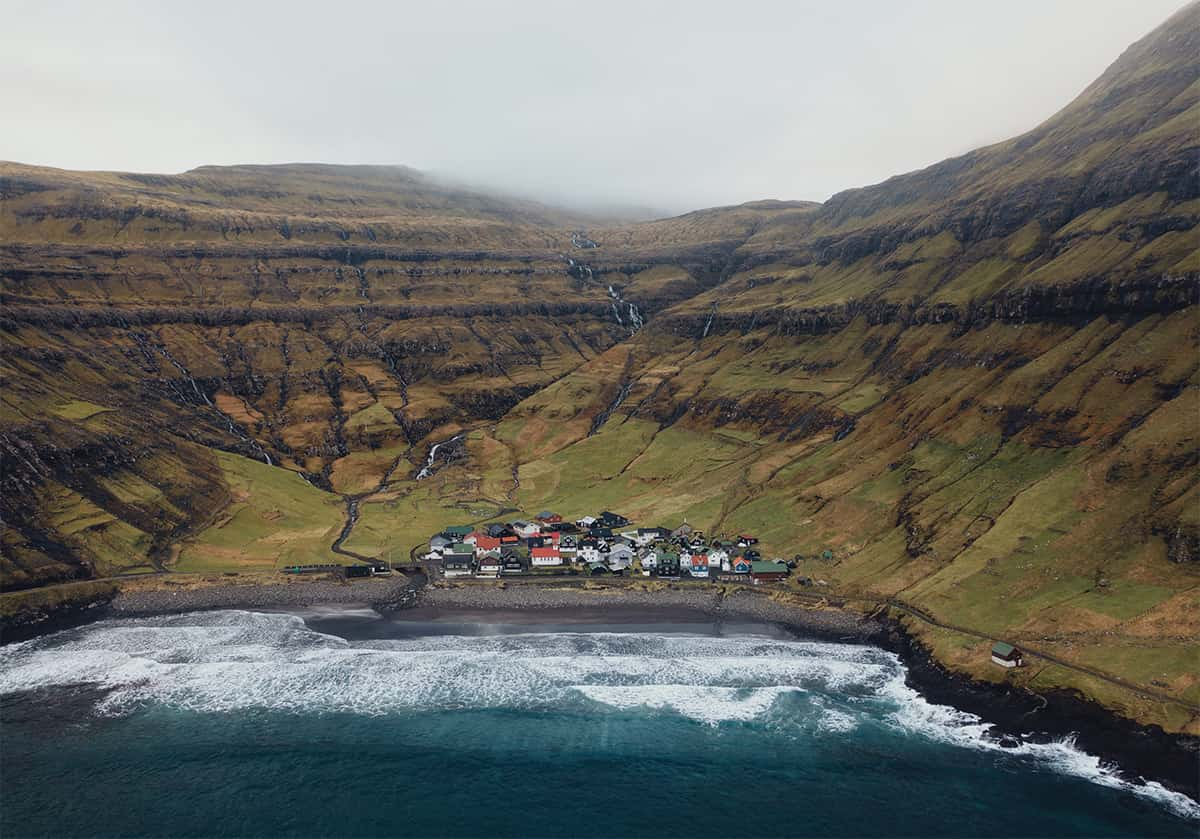

Thomas Quan/@tom__quan, Visit Faroe Islands
Streymoy Island
Not to be outdone by Streymoy, Eysturoy is the second largest island and there you can find Gjogv and its gorgeous gorge and the sea stacks Risin and Kellingin.
Gjogv
Gjogv is the northernmost village on the island and is named after a 200-meter-long sea-filled gorge that runs from the village into the ocean. One of the best natural harbors in the Faroe Islands is in Gjogv. Its natural scenery is so outstanding that Gjogv was nominated for the Natural & Environmental Awards in 2014 by the Nordic Council.
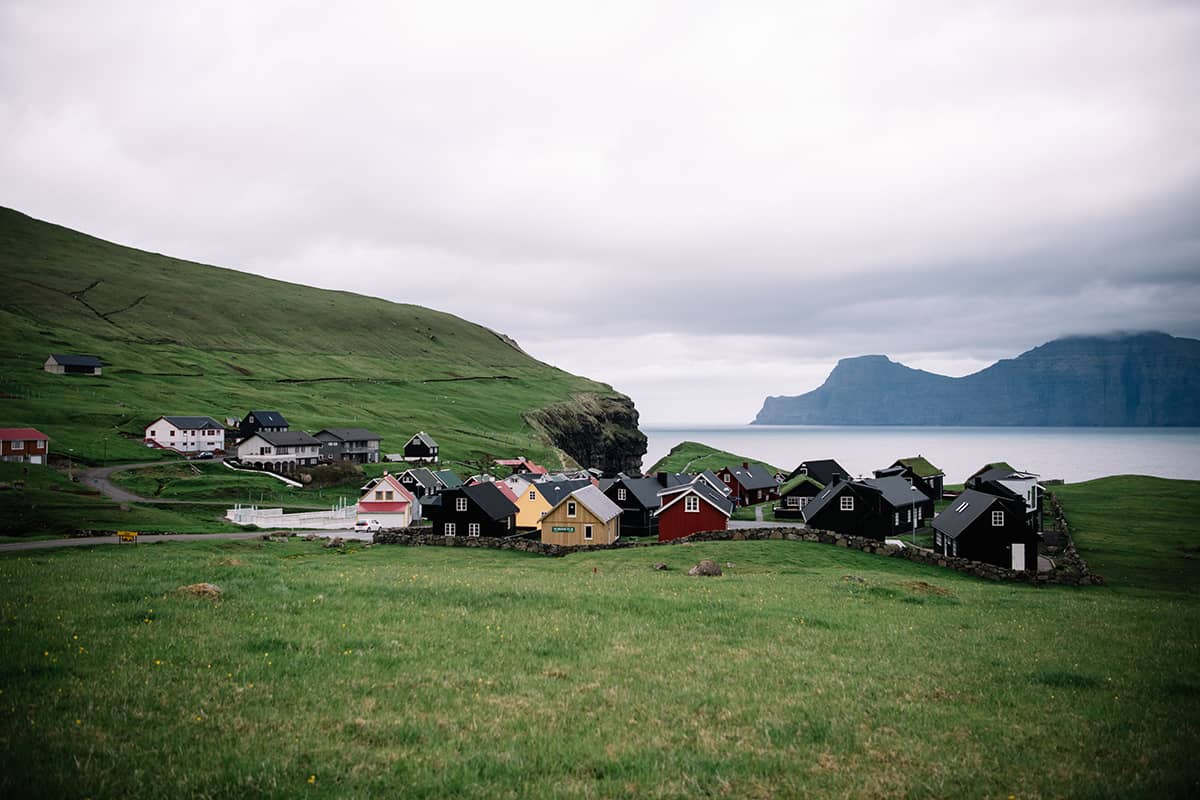

Klara/@klarajohannesen, Visit Faroe Islands
